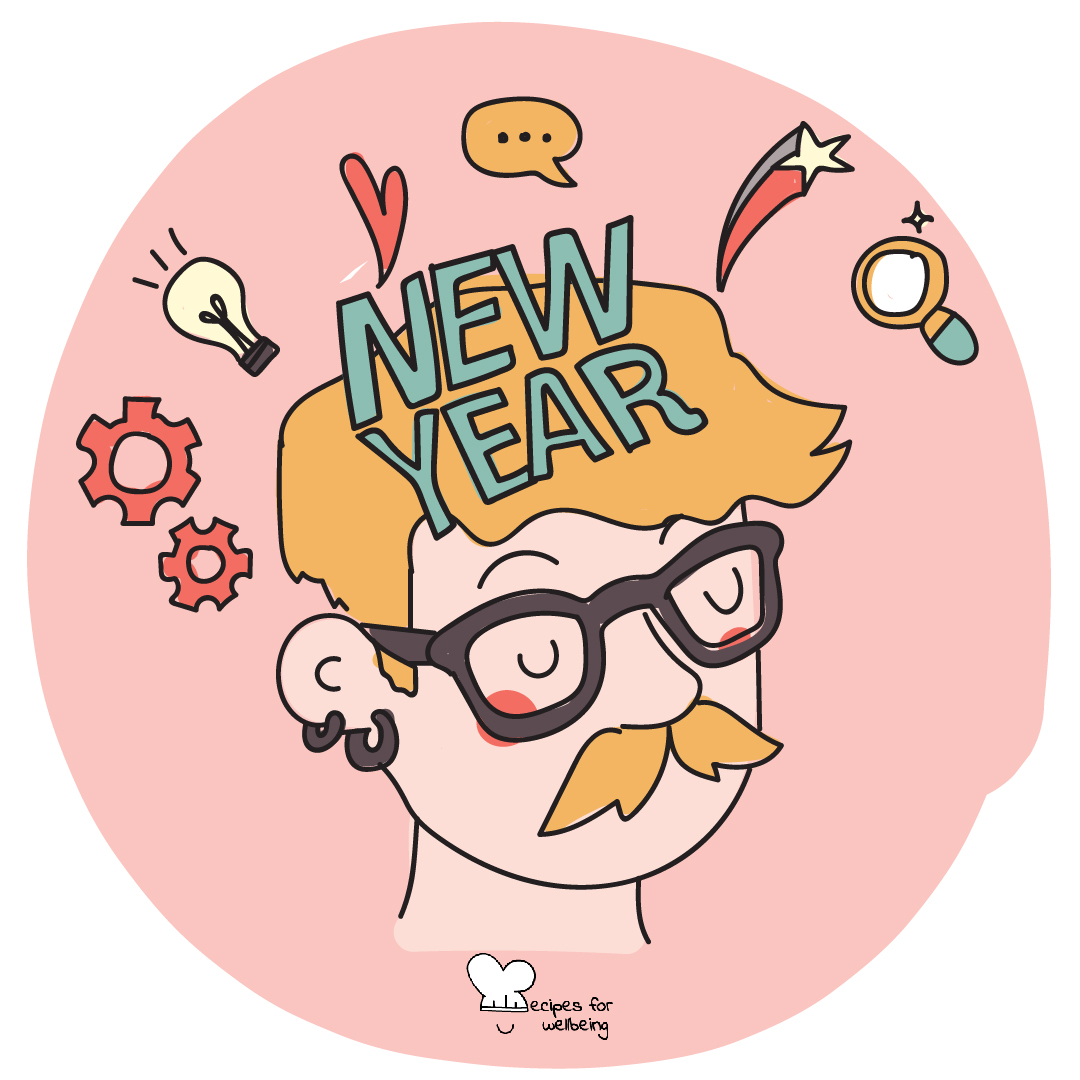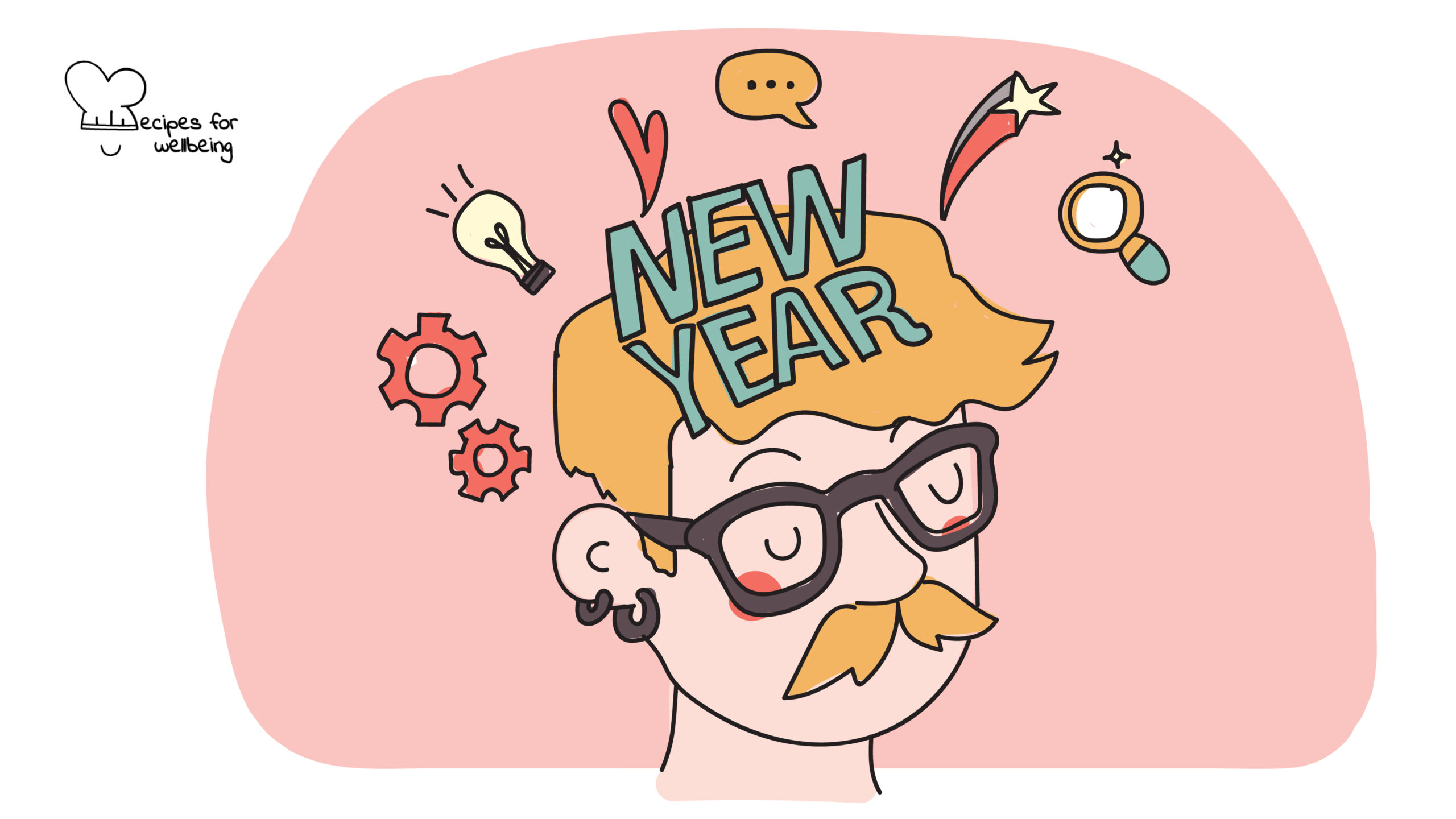
Mind mapping for a rewarding year
Change is hard at first, messy in the middle and gorgeous at the end. —Robin Sharma
👥 Serves: 1 person
🎚 Difficulty: Easy
⏳ Total time: Half a day
🥣 Ingredients: A quiet place with no distractions, pen, paper, and an open mind
🤓 Wholebeing Domains: Accomplishments, Meaning, Positive Emotion, Ritualising
💪 Wholebeing Skills: Affirmation, Aligning with the cycles, Celebration, Commitment, Determination, Direction, Hope, Intention-setting, Planning, Ritualising

Mind mapping for a rewarding year
📝 Description
A personal reflective session designed to reach goals in all aspects of your life.
8,760 hours: the amount of time you spent watching Netflix in the past year?! The amount of time you spent in work meetings last week?! It could very well be, but 8,760 hours is actually the number of hours we all have in one year!
This is not to say everyone’s 8,760 hours are all going to look the same. It is important to acknowledge that there are many intersectional factors such as childcare, poverty, gender, location, race, and more that have a significant impact on specific challenges and opportunities that come our way.
That being said, once we eliminate the hours we spend sleeping, we go down to around 6,300 hours per year. That time is precious! Ready to make the most of every day?
This recipe has been adapted from the musing of Alex Vermeer, a writer and researcher at the Machine Intelligence Research Institute, by our wellbeing content writer collaborator Marissa Del Mistro.
👣 Steps
Step 1 – Set up your mind map (25’)
In a quiet place, gather your materials to create your mind map. A mind map is a goal-setting technique that requires a central idea in the centre of the page with connected ideas branching out from it. A mind map is easy to follow, as it follows a clear and simple structure. It’s also a very creative activity, so it feels like a fun art project!
While you can use mind mapping for all sorts of planning, this exercise is about focusing on the year ahead. You can, of course, adapt it to a month or 6-month goal setting.
So, right in the centre of your mind map write something special – it could be your name, your word of the year (link to word of the year recipe) or a motivating quote.
Step 2 – Determine your ‘life areas’ (45’)
Every aspect of your life, from relationships, to your job, to your finances all work in tandem to bring you joy, stability, and purpose. Being a busy adult is hard some days, so planning, and being inclusive of all areas of your life helps you focus on the whole picture, as opposed to just one singular thing.
Using your mind map, pick relevant “life areas” that speak most to you. I suggest having at least 8 life areas, but you can have as many or as little as you want. Some life’s areas include worldview and purpose, movement and exercise, money and finances, career and employment, social life and intimate relationships, character and integrity, excitement and adventure, travel and exploration, education and skill developments, values, and volunteering – you get the idea! These life areas are the branches of your central vision on the mind map.
Step 3 – Reflect on the past (20’)
To move forward, it’s important to reflect on the past. Take note of the previous year in all of your life areas and consider the following questions:
- What did you make enough time for?
- What did you not make enough time for?
- Did you reach the milestone you set out in the past in ____?
- What could you try harder at this year?
- What goals are non-negotiable?
- Were you a good friend/sibling/parent/partner?
- What did you do to improve your skills?
- What are your values and virtues you want to carry with you?
- Did you practise self-care?
On a separate piece of paper to your mind map, jot down whatever comes to mind, as you assess your priorities and how you felt you did in the previous months or year.
Step 4 – Mind map for the future (1 hour)
Keeping past failures and successes at the forefront of your mind, work on filling in your mind map for the future. This should be an exciting project full of hope – but it’s normal for it to bring up some overwhelming emotions. If this happens, focus on your breathing, and take a short break before returning. This is a judgement-free zone!
Try to keep your goal setting to realistic, tangible goals of what you wish for the upcoming year to be filled with! Examples could be, I will complete a half marathon by this time next year, or I will spend two hours a week reading, or I will spend 4 days a month volunteering at a local senior’s home.
Step 5 – Hold yourself accountable (1 hour on a regular basis)
Do you have regular reviews at work? Think of this like that! Holding yourself accountable is the key to successfully reaching goals and keeping new habits on track. Every month, every other month or every week (you do you!) have a meeting where you review your goals.
- What is something going well?
- What can you do more of?
- Is there something you can do less of?
- Are you still fitting in time for physical activity and time with friends?
- What are you prioritising?
These meetings help you hold yourself accountable and allow you to feel proud and reflect on what you can do while motivating yourself to keep going. This year is yours!

